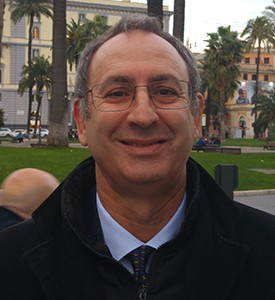
Intecs Solutions develops innovative security systems for civil and military applications.
RELATED PUBLICATION
ARTICLES FROM THIS PUBLICATION
Marco Casucci
MANAGING DIRECTOR, INTECS SOLUTIONS
Intecs Solutions describes itself as a ‘brainware company’. Could you provide a brief overview of your operations and the software support that you offer?
Intecs launched in 1974 and in the beginning, we were working within the aerospace and defence domain, developing software for real time embedded systems. Currently, Intecs is a 550 employees group delivering real time components, systems and sub-systems, having safety critical requirements. Our premises are mainly located in Italy but we have some operations in France and Germany. Thanks to the acquisition of the former Siemens labs for transmission equipment in L’Aquila, we can provide both hardware and software solutions. Ten years ago we started offering new products for risk mitigation at railways crossings and systems for homeland security based on software defined with radio and acoustic technology. Now, the product line accounts for 20% in terms of turnover for the company. Railways represent about 30% of our operations; aerospace and defence are split 20%/20%, and the remaining 30% is in automotive, telecom and smart systems. Now, we are starting the marketing activities of our products outside Italy because our experience in obstacle detection on railways tracks at the level crossing is extremely valuable in the international market like North America, Middle East, Far East and Asia.
Why is it important to continue developing security and defence technologies?
Homeland Security and Defence technology is continuously increasing its importance due to the international terrorism threats. In certain instances, it is paramount for police and soldiers to know what is happening in their surroundings. In this perspective, we have technology and products for acoustic detection using beam-forming algorithms to identify threats far away.
We make use of artificial intelligence [AI] technologies to detect, for example, whether what we hear is a helicopter, a jet, a drone or gunfire. This technology can be used to detect threats in cities, around military or police installations or along borders, etc. We envisage a strong development of acoustic sensors within the civil domain because cities have video cameras everywhere but microphones can capture additional information on a “720 degree view”, even though the event is not in sight. If someone smashes a window or there is gunshot, our system sends an alarm to the police or security authorities. We also supply defence products that work within the electromagnetic spectrum. The information “sniffed” in the electromagnetic spectrum is analysed in real time using a Software Defined Radio approach to determine whether it needs to be more deeply investigated.
Where do you see the aerospace and defence segments of the company in the next 3-5 years?
Aerospace in Europe is mainly a public driven sector with small growth and a lack of real competition. Moreover, EU economical and financial rules impose to several European countries, including Italy, little room for investment. The demand for defence is not increasing despite the qualms of security but in the future, due to several reasons like the pressure of immigration at the EU borders and the fight against international terrorism, defence and homeland security will become more and more important. Intecs Solutions works with all the main European defence and aerospace companies, including the European Space Agency, the Italian Space Agency, Nato and the Italian Ministry of Defence.











